- GTMBA
- Posts
- The GTM Engineer School - Week 1 Overview
The GTM Engineer School - Week 1 Overview
Diving into Octave & Clay
This is part 1 of a multi-part series, outlining key learnings from the GTM Engineer School that took place late April through May
👋🏻 Just wrapped up week 1 of the GTM Engineer School, and have really been loving it so far. Kudos to Jared and Matteo for pioneering this.
I'll write an overview article each week of what we're learning and key takeaways to help uplevel your GTM Engineer skillset.
Overview Of The New Wave: GTM Engineering
We’ve wrote about this a bunch (see here) - but you’ve probably seen the buzzword GTM Engineer all over LinkedIn. IMO - it’s not just a fad, it’s truly the way top companies see alpha in their GTM processes in today’s crowded market.
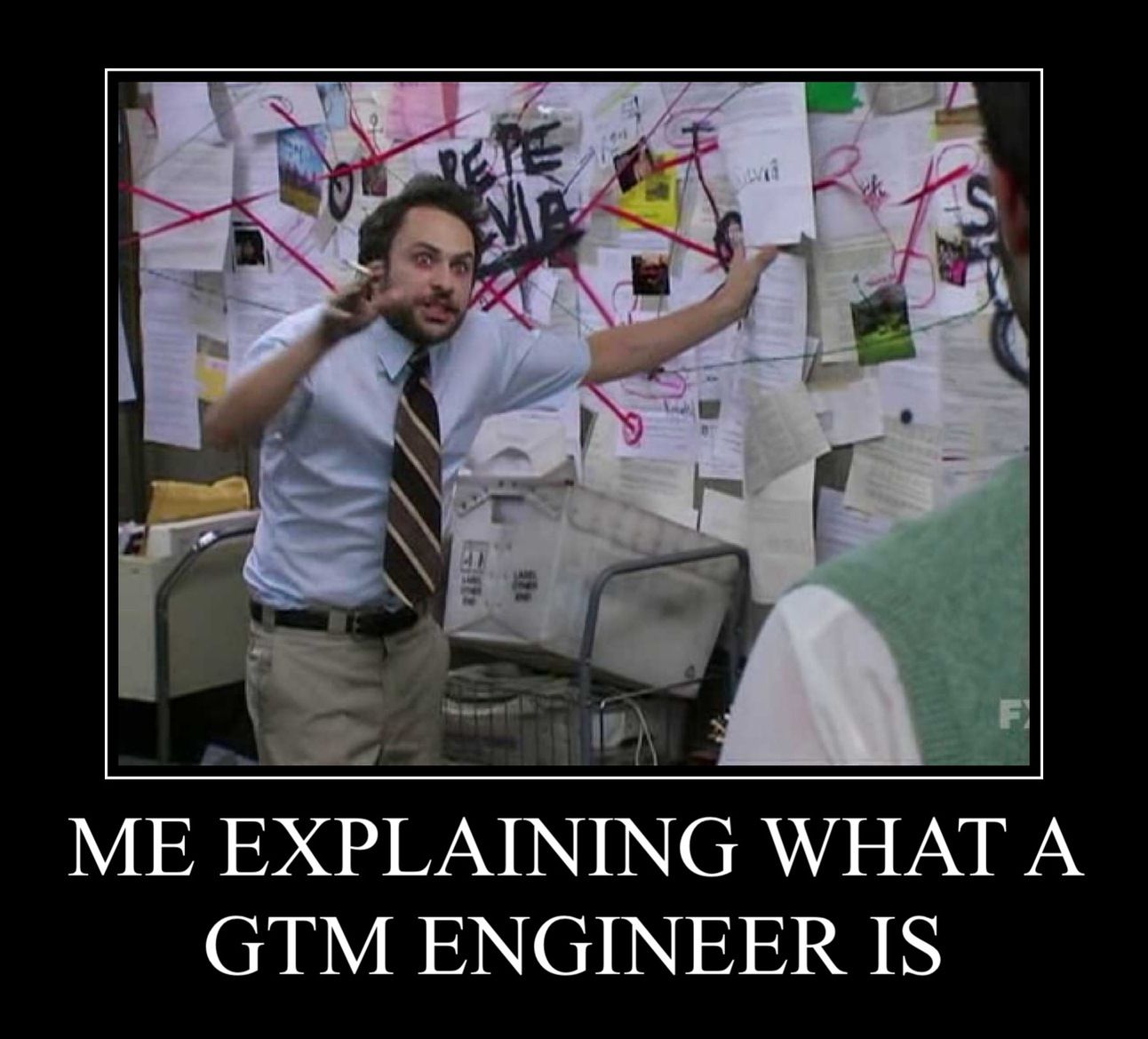
It focuses on:
Parallelization: Running parallel operations at scale instead of just researching one lead or crafting one message - doing it for hundreds or thousands within minutes
Automations & Integrations: Automated workflows that run on their own, not just when you click a button. Actions happen daily, hourly, or at the moment a real-world trigger fires
Modularity: You don't build things from scratch. You build to reuse - personas, messages, sequences, workflows. They all become modular blocks
There are so many ways in which you can use GTM Engineering:
It makes sense to start with outbound as the first spear, for several reasons:
Outbound remains the biggest growth lever for seed to series C B2B companies with ACV over $30K
Historically, outbound is manual, slow, and talent-intensive, with high team churn and skill gaps
This makes it ripe for reinvention through GTM Engineering, which can transform outbound into something scalable, automated, and smart
While inbound is relatively straightforward with limited entry points, outbound offers a vast landscape of signals, triggers, and personalization opportunities
GTME's parallelization and automation capabilities can truly shine when applied to the complexity of outbound prospecting
The payoff is high where the friction is low, making outbound a natural starting point for implementing GTM Engineering principles
Octave: The Messaging Command Center
Custom messaging is key to GTME work, this concept of personalization at scale.
This concept has been around a little, but with the emergence of AI, we have the ability to do this on steroids.
AI is making messaging harder
In the course, Matteo highlighted how AI has made messaging much harder than it used to be:
Products are easier than ever to build → competition and capability overlap scales
Content is easier than ever to create → channels are flooded and saturated
Most use zero-to-one-shot prompts → content reads more or less the same
This creates real business challenges where product-level and content-level differentiation becomes increasingly difficult.
Octave is a tool that is helping to cut through this noise; they’re trying to do what Figma did for design and GitHub did for code for messaging.
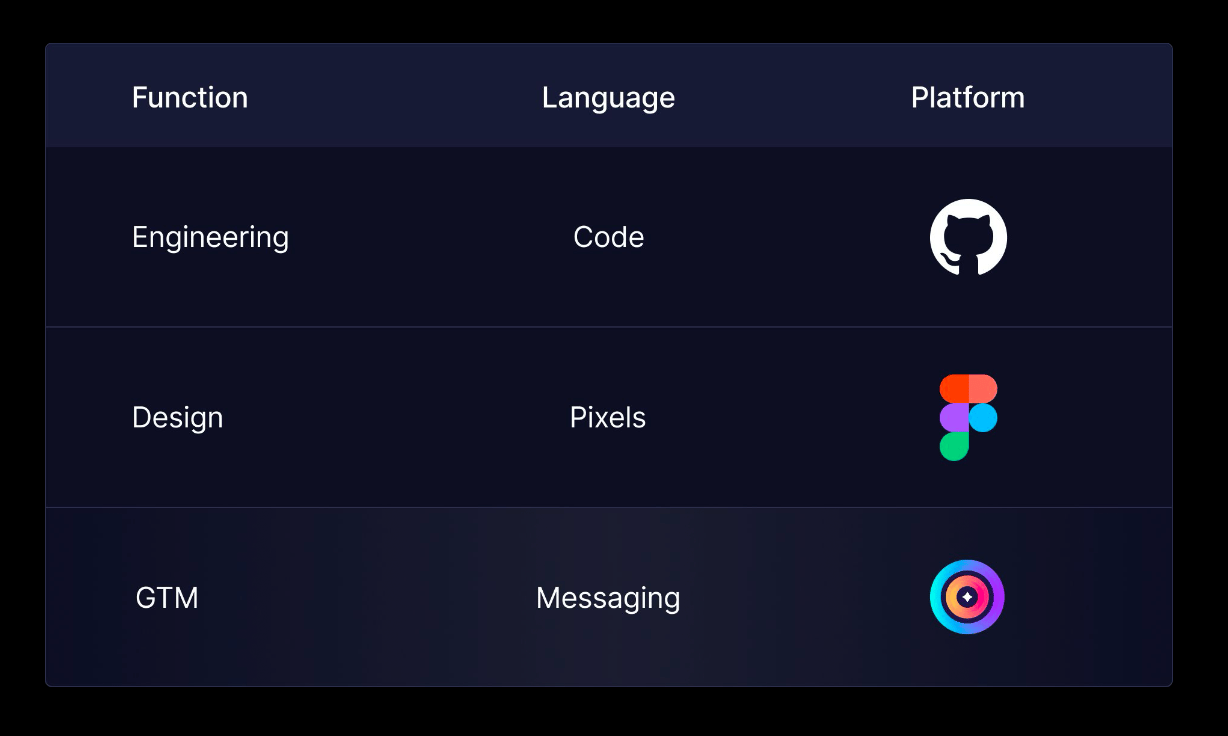
From the GTM Engineering School curriculum
In the course, we focused on building a solid messaging foundation using Octave, which Zach Vidibor (CEO) described as "the living, breathing home for your ICP."
We created:
A messaging library with core components (products, personas, use cases, references)
Playbooks that adapt our core messaging to specific scenarios
Sequence agents that can generate personalized outreach
I really like this video below, which gave a good overview of the product and how to use it - we pretty much went through this in the course.
Once we created this, we jumped into Clay for class #2.
Clay: you already know
We were blessed with the presence of early Clay employee Yash (who says he’s GTM Engineer #1). Clay is no secret to GTMBA (we wrote about it here), and for novices who want to learn more, I’d highly recommend you check out their Clay University course to help you get up to speed.
However, the best way to learn (as with most things) is by doing, so nothing in this article will be as deep as you trialing the tool yourself, which you can do with my link here.
As an overview, Clay is best looked at with the Find —> Enrich —> Transform —> Export framework, and can be outlined in this graph below:
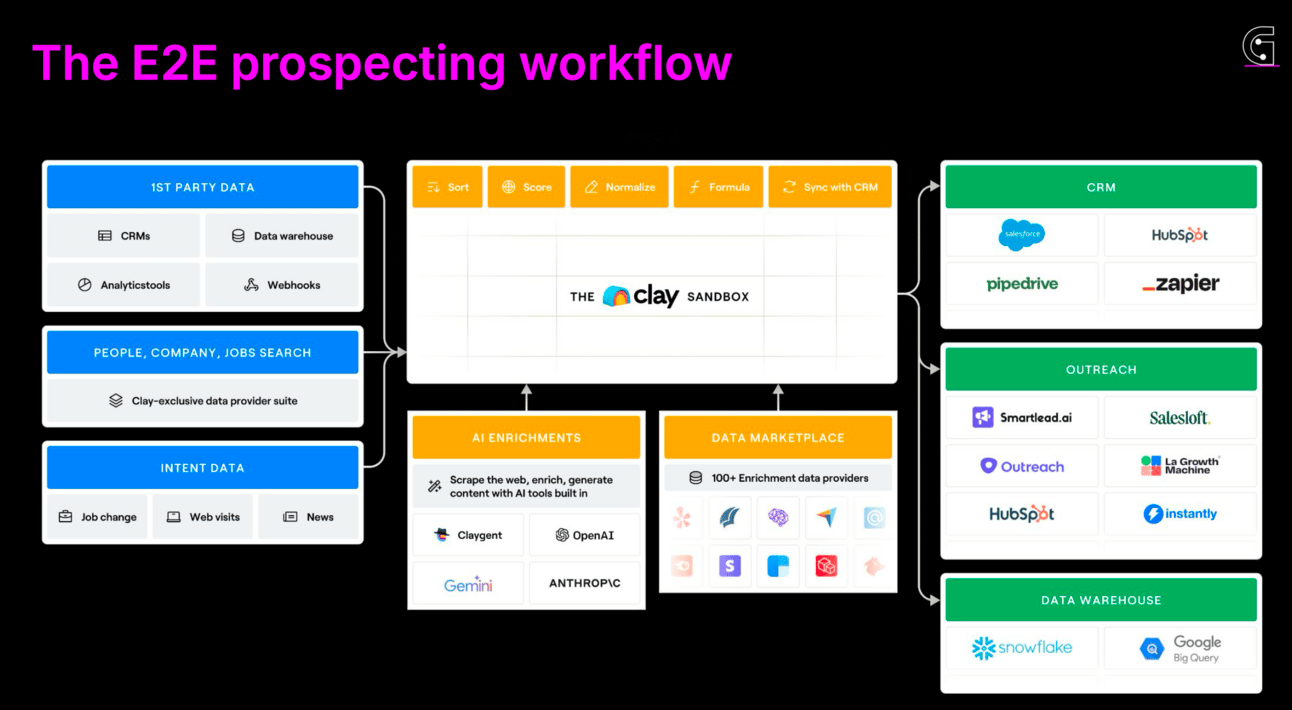
From the GTM Engineering School curriculum
We went through the new GTM building blocks - a three-tiered approach:
Data Foundation (#1) - Everything starts with solid account research, TAM sourcing, and CRM enrichment
Automation Layer (#2) - Build workflows that power both inbound lead enrichment and AI outbound at scale
GTM Strategy (#3) - Only after establishing the first two layers can you effectively execute Account-Based Marketing, implement Signals & Intent monitoring, and leverage GTM Copilot capabilities
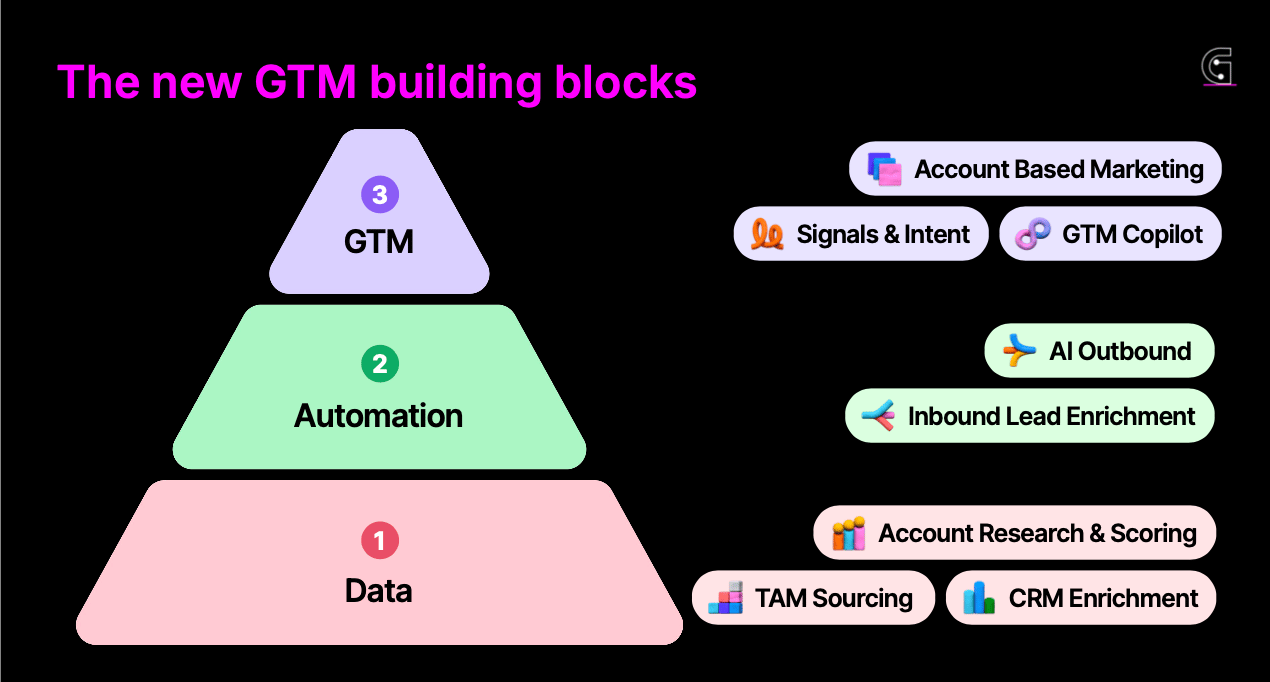
From the GTM Engineering School curriculum
Some Clay tips Yash mentions from the course that stood out to me as important for beginners:
Be laser-focused with your ICP: "If your list is 40-50,000 people large, it is not an ICP - it's just a list." Aim for smaller, more targeted groups of 1-3,000 companies
Create relational tables: Separate companies and people tables to avoid wasting credits on redundant enrichments
Use waterfall enrichment: Layer multiple data providers to maximize coverage while minimizing costs
Validate your data: Always validate emails and phone numbers before activating to protect deliverability
Always test on 10 rows first: Save and run on limited data before running across your entire table (Clay credit savviness is a skill in its own regard)
Think marble sculpture, not block: Start with a larger dataset and chip away until you have your perfectly targeted list
Next Week
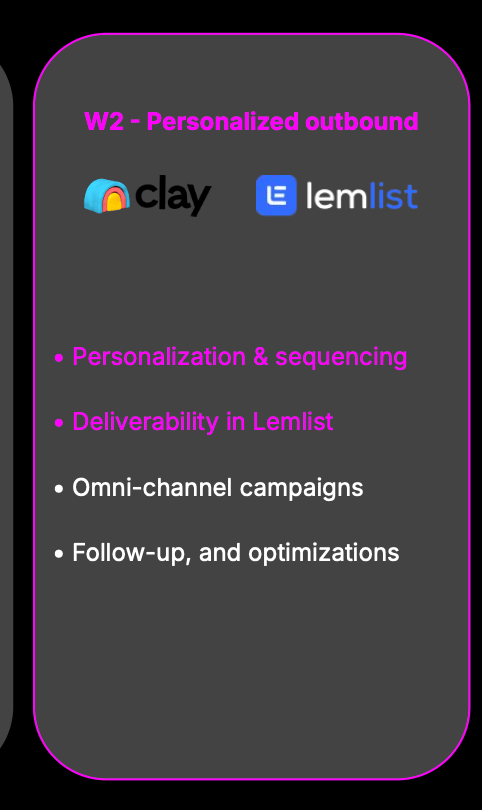
From the GTM Engineering School curriculum
Next week, we'll explore how to turn all this prospecting data into personalized messaging by connecting Clay to Octave and activating through Lemlist.
The course has been great so far - shoot me a note if any of you are interested in joining future cohorts!

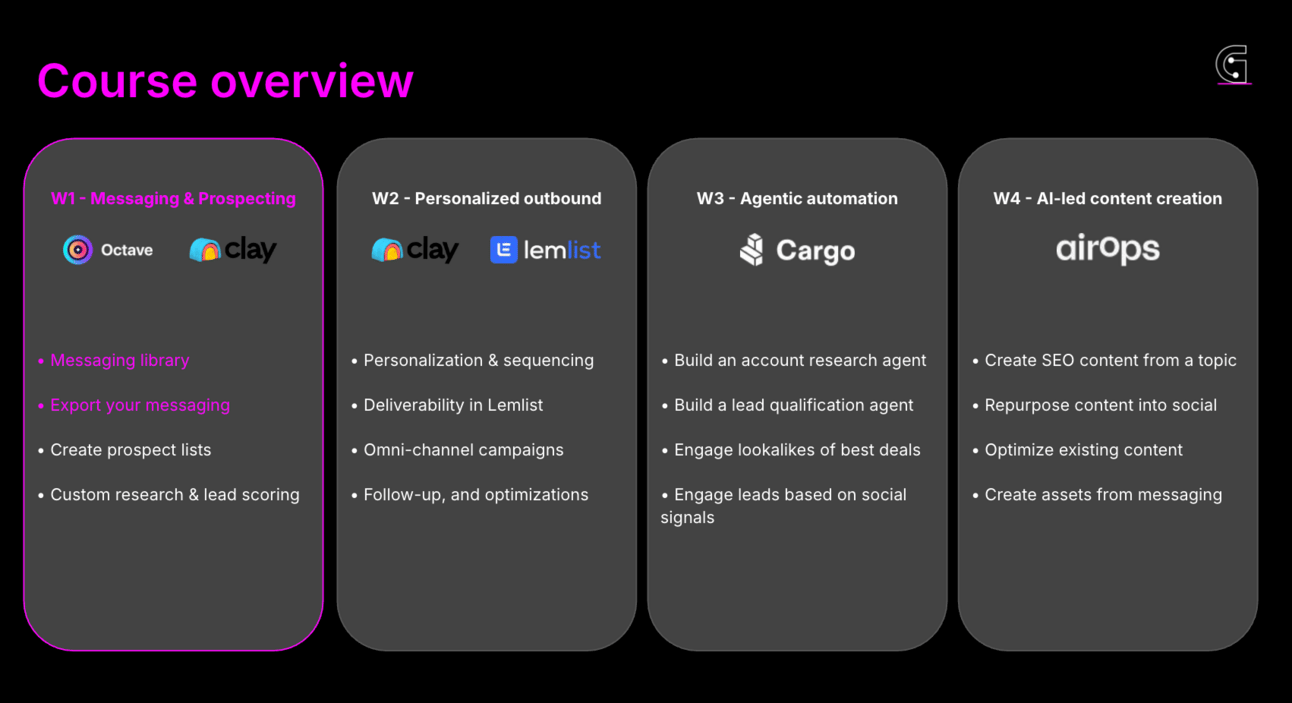
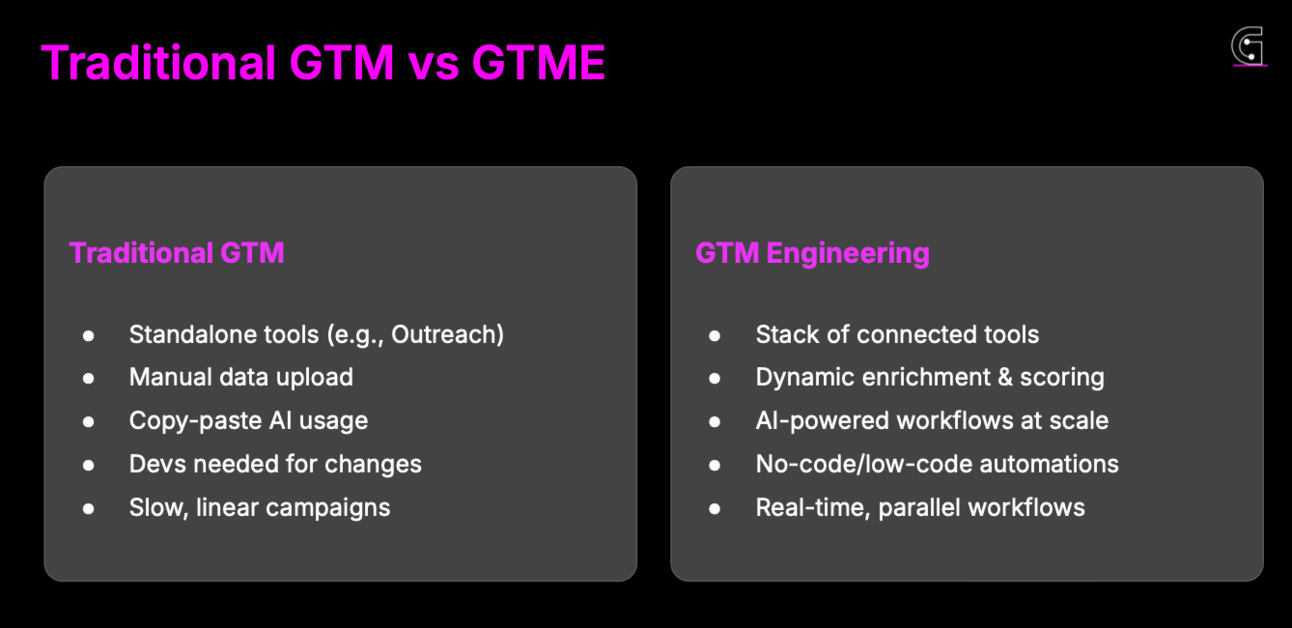

Reply